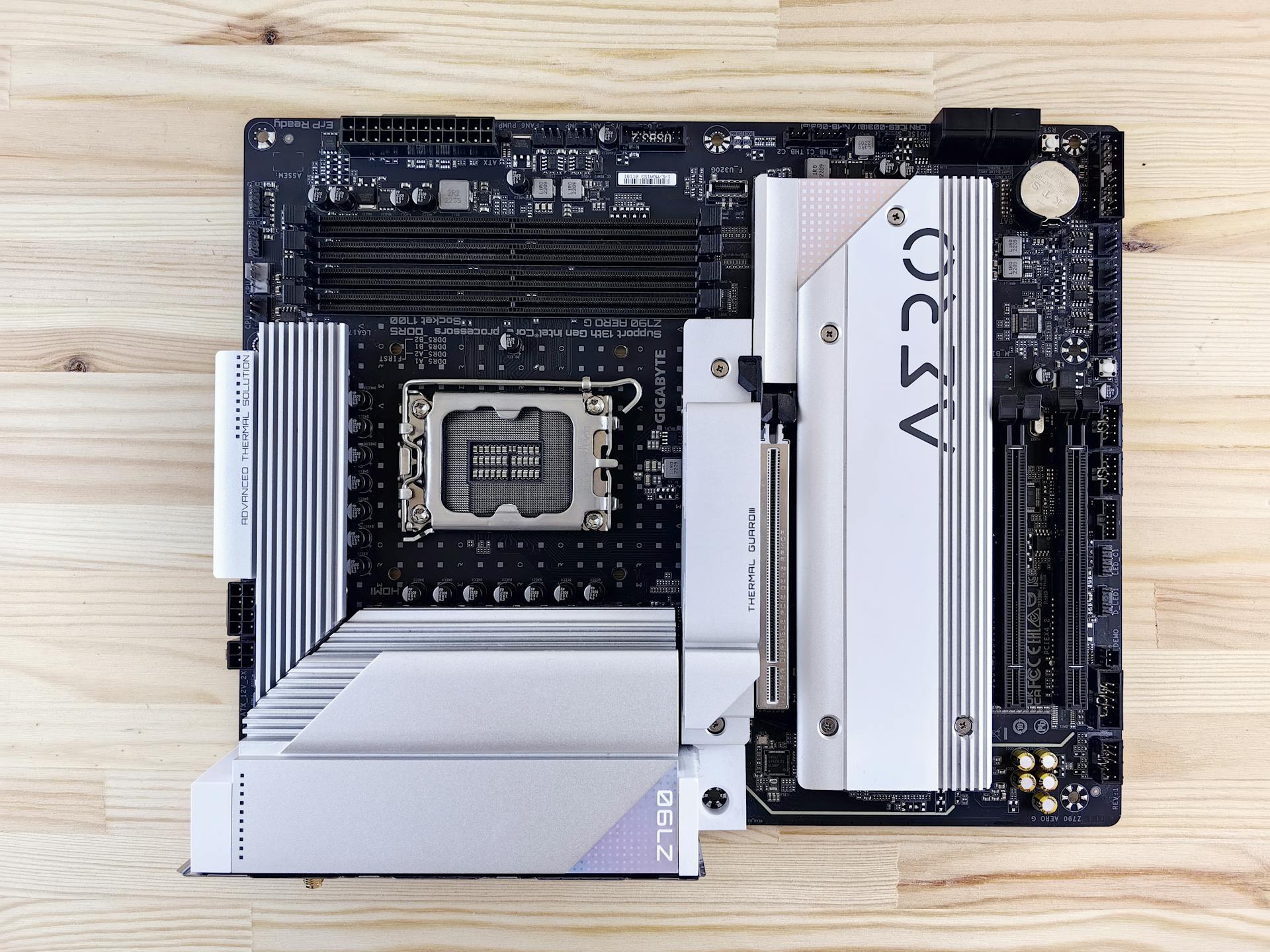
Comp sci fields are incredibly diverse, with various specializations that cater to different interests and skill sets. With so many options, it can be overwhelming to decide which path to take.
Artificial intelligence (AI) and machine learning (ML) are two closely related fields that have gained immense popularity in recent years. AI focuses on creating intelligent machines that can perform tasks that typically require human intelligence.
Machine learning, on the other hand, is a subset of AI that enables machines to learn from data without being explicitly programmed. This field is particularly useful for tasks such as image and speech recognition, natural language processing, and predictive analytics.
Data science and software engineering are two other significant fields in comp sci that involve working with data and developing software applications. Data science is concerned with extracting insights and knowledge from data, while software engineering focuses on designing, developing, and testing software systems.
Related reading: J. H. Wilkinson Prize for Numerical Software
Computer Science Fields
Computer science spans a range of topics from theoretical studies of algorithms and the limits of computation to the practical issues of implementing computing systems in hardware and software. The discipline is divided into four crucial areas: theory of computation, algorithms and data structures, programming methodology and languages, and computer elements and architecture.
Some of the important areas of computer science include software engineering, artificial intelligence, computer networking and communication, database systems, parallel computation, distributed computation, human–computer interaction, computer graphics, operating systems, and numerical and symbolic computation.
A number of computer scientists have argued for the distinction of three separate paradigms in computer science: science, technology, and mathematics, or theory, abstraction (modeling), and design, or the "rationalist paradigm", the "technocratic paradigm", and the "scientific paradigm". Computer science focuses on methods involved in design, specification, programming, verification, implementation and testing of human-made computing systems.
Here are some key computer science fields:
- Theory of computation
- Software engineering
- Artificial intelligence
- Computer networking and communication
- Database systems
- Parallel computation
- Distributed computation
- Human–computer interaction
- Computer graphics
- Operating systems
- Numerical and symbolic computation
Epistemology
Computer science is a discipline that has sparked debate over its classification, with some arguing it's a science, others engineering, and a few seeing it as a mathematical discipline.
There's a strong case to be made that computer science is an empirical science, as Allen Newell and Herbert A. Simon argued in 1975, that each new machine built is an experiment that poses a question to nature and provides an answer through observation and analysis.
Computer science relies heavily on empirical testing to evaluate the correctness of programs, but defining the laws and theorems of computer science remains a problem.
The reliability of computational systems is investigated in a similar way to bridges in civil engineering and airplanes in aerospace engineering, leading some to classify computer science as an engineering discipline.
Computer programs are physical realizations of mathematical entities, and formal methods can be used to deductively reason through them.
Edsger W. Dijkstra and Tony Hoare see instructions for computer programs as mathematical sentences, and formal semantics for programming languages as mathematical axiomatic systems.
For your interest: Best Comp Sci Masters Programs
Paradigms
Computer science is a vast and fascinating field, and one of the key concepts that underpin it is the idea of paradigms. A paradigm is essentially a way of thinking or an approach to problem-solving, and in computer science, there are several different paradigms that are widely used.
Peter Wegner argued that computer science has three separate paradigms: science, technology, and mathematics. Meanwhile, Peter Denning's working group identified three paradigms as well: theory, abstraction (modeling), and design. Amnon H. Eden described three paradigms too: the "rationalist paradigm", the "technocratic paradigm", and the "scientific paradigm."
Computer science focuses on methods involved in design, specification, programming, verification, implementation, and testing of human-made computing systems. This is a broad field that encompasses many different areas, including programming paradigms.
Programming paradigms are essentially different ways of approaching programming, and there are several common ones. These include functional programming, which treats computation as the evaluation of mathematical functions and avoids state and mutable data; imperative programming, which uses statements that change a program's state; object-oriented programming, which is based on the concept of "objects" that contain data and code; and service-oriented programming, which uses "services" as the unit of computer work.
Here are some key characteristics of each programming paradigm:
- Functional programming: declarative, avoids state and mutable data
- Imperative programming: focuses on describing how a program operates
- Object-oriented programming: based on "objects" with data and code
- Service-oriented programming: uses "services" as the unit of computer work
Data Structures and Algorithms
Data Structures and Algorithms are the building blocks of computer science. They involve the study of commonly used computational methods and their computational efficiency.
Computational efficiency is crucial in computer science, as it directly affects how fast and well a program runs. According to Example 4, Analysis of algorithms is a key area of study in data structures and algorithms, focusing on the time and space complexity of algorithms.
In practice, understanding data structures and algorithms can help you write more efficient code, making your programs run faster and use less memory. As a computer scientist, you'll want to have a strong grasp of data structures and algorithms to tackle complex problems.
Some common data structures include arrays, linked lists, stacks, and queues, which are used to store and manipulate data. According to Example 4, Data structures are a key area of study in data structures and algorithms, and they can be analyzed using various techniques to determine their computational efficiency.
Broaden your view: Grokking Algorithms Second Edition
In terms of computational complexity, algorithms can be classified as O(n), O(n^2), or O(n^3), with O(n) being the most efficient. According to Example 4, O(n) is used to describe an algorithm that takes linear time to complete, meaning its running time increases linearly with the size of the input.
Here are some common types of algorithms and their time complexities:
These are just a few examples of the many data structures and algorithms that exist in computer science. By understanding and mastering these concepts, you'll be well on your way to becoming a skilled computer scientist.
Information Theory
Information Theory is a branch of computer science that deals with the quantification of information, developed by Claude Shannon to find fundamental limits on signal processing operations. This field is closely related to probability and statistics.
Information Theory helps us understand how to compress data and store and communicate it reliably. For example, have you ever noticed how some files are much smaller than others, even though they contain the same amount of information? That's because of data compression, which is made possible by Information Theory.
Consider reading: Cs Theory
One of the key concepts in Information Theory is the idea of channel capacity, which refers to the maximum rate at which information can be transmitted over a communication channel. This is a crucial concept in coding theory, which is the study of the properties of codes and their fitness for a specific application.
Coding theory is used for data compression, cryptography, error detection and correction, and more recently for network coding. Some of the key areas of study in coding theory include algorithmic information theory, signal detection theory, and Kolmogorov complexity.
Here are some of the key areas of study in Information Theory:
- Channel capacity
- Algorithmic information theory
- Signal detection theory
- Kolmogorov complexity
Image Processing
Image processing is a crucial aspect of computer science, and it's used in various fields such as medical image computing and image processing.
The fast Fourier transform (FFT) algorithm plays a significant role in image processing, and it's one of the unsolved problems in theoretical computer science to find the lower bound on its complexity.
Image processing involves the manipulation of digital images to extract information, which can be used for various purposes like image compression and enhancement.
Finance and Engineering
Computer science has a wide range of applications, but some of the most interesting fields are finance and engineering. Scientific computing is a major usage of scientific computing, which involves simulation of various processes, including computational fluid dynamics and physical systems.
One notable application of scientific computing is in the design of complete aircraft, which is made possible by modern computers. Optimization of such designs is a key aspect of computational science.
Here are some examples of fields that fall under the umbrella of finance and engineering:
Computational science also has many practical applications, such as the design of integrated circuits, which is made possible by specialized software.
Human Interaction
Human interaction is a vital aspect of computer science, focusing on the relationship between humans and computer interfaces. It's an area that's constantly evolving, with new technologies and techniques emerging all the time.
Human-computer interaction (HCI) is the field of study and research that explores how people interact with computers. This field has several subfields that delve into the emotional, social, and cognitive aspects of human-computer interaction.
Affective computing is a subfield of HCI that focuses on the analysis and generation of emotions in computers. It's an area that's still in its early stages, but it has the potential to revolutionize the way we interact with computers.
Brain-computer interfaces are another subfield of HCI that allows people to control devices with their thoughts. This technology has the potential to help people with paralysis or other motor disorders communicate more easily.
Here are some key subfields of HCI:
These subfields are all important areas of study within HCI, and they have the potential to shape the way we interact with computers in the future.
Software Engineering
Software engineering is the study of designing, implementing, and modifying software to ensure it meets high standards of quality, affordability, and maintainability. It involves a systematic approach to software design, applying engineering practices to create software that is efficient, reliable, and scalable.
Software engineers deal with the internal arrangement and maintenance of software, not just its creation or manufacture. This includes tasks such as software testing, systems engineering, technical debt, and software development processes.
Consider reading: ACM Software System Award
A strong background in computer programming is highly recommended for software engineering positions, which typically require a bachelor's degree. Interpersonal skills and detail-oriented work habits are also essential for success in this field.
Some of the key areas of focus in software engineering include:
• Software testing
• Systems engineering
• Technical debt
• Software development processes
Software engineers work on a wide range of projects, from developing new software applications to maintaining and updating existing ones. With the increasing demand for technology and software solutions, the field of software engineering is expected to continue growing in the coming years.
As a software engineer, you can expect a salary range of around $105,000, according to the U.S. Bureau of Labor Statistics. With the right skills and experience, you can have a rewarding and challenging career in this field.
Architecture
Architecture is the foundation of computer science, and it's fascinating to learn about it. Computer architecture, or digital computer organization, is the conceptual design and fundamental operational structure of a computer system.
Computer engineers study computational logic and design of computer hardware, from individual processor components to supercomputers and embedded systems. They focus on the way the central processing unit performs internally and accesses addresses in memory.
The term "architecture" in computer literature can be traced back to the work of Lyle R. Johnson and Frederick P. Brooks Jr. in 1959. They were members of the Machine Organization department in IBM's main research center.
Computer architecture is closely related to microarchitecture, which is the internal organization of a computer's central processing unit. It's also connected to multiprocessing, where multiple processing units work together to perform tasks.
Here's a breakdown of the different aspects of computer architecture:
Systems architecture, on the other hand, is a crucial aspect of IT strategy. A Systems Architect analyzes a company's needs and defines the architecture of the system to create the best possible experience. They need to critically analyze the objectives of a business and identify the resources required to achieve them.
In summary, computer architecture is a complex and fascinating field that involves the design and development of computer hardware and software. It's essential to understand the different aspects of computer architecture to build efficient and effective computer systems.
Concurrent, Parallel and Distributed Computing
Concurrent, parallel and distributed computing are all about executing multiple computations at the same time. This is a property of systems that allows several tasks to run simultaneously and potentially interact with each other.
Concurrency models, such as Petri nets and process calculi, have been developed to understand and analyze concurrent computation. These models help us design and optimize systems that can handle multiple tasks efficiently.
In a distributed system, multiple computers are connected in a network while using concurrency. This allows computers to have their own private memory and exchange information to achieve common goals.
Distributed systems are particularly useful in applications where many computers need to work together to solve a problem or complete a task.
Information Security
Information Security is a fascinating field that requires a high level of attention to detail. Being meticulous and detail-oriented is mandatory for success in this role, as a whole organization's security is on the line.
Information Security Analysts are in charge of implementing systems of safety and protecting a company's computer networks. They must be able to predict outcomes and adjust security accordingly.
The need for computer and information technology (IT) occupations, including Information Security Analysts, is estimated to grow by 13 percent in the next decade. This is faster than the average growth rate of all occupations, which is about seven percent.
Computer security is a branch of computer technology with the objective of protecting information from unauthorized access, disruption, or modification while maintaining the accessibility and usability of the system for its intended users.
Databases and Data Mining
Databases and data mining are crucial components of computer science, allowing us to organize and store large amounts of data with ease.
A database is essentially a digital repository that helps us manage data, and it's managed using database management systems to store, create, maintain, and search data. This is made possible through database models and query languages.
Data mining is a process of discovering patterns in large data sets, which can be incredibly valuable for making informed decisions or gaining new insights.
Technovation
Technovation is a global technology program that emphasizes entrepreneurship, and it's a fantastic opportunity for girls in middle school, high school, or college to create and launch a mobile app during a three-month curriculum.
Students are matched with female mentors and get to present their apps to investors via YouTube. Finalists pitch their ideas in Silicon Valley.
The program's methodology focuses on computer science and software engineering, which are both in high demand fields. According to the U.S. Department of Labor's Bureau of Labor Statistics, the need for computer and information technology occupations is estimated to grow by 13 percent in the next decade.
Here are some areas of computer science that you can explore through programs like Technovation:
- Software development: As a software developer, your job will be to design computer applications. Most positions require a bachelor’s degree.
- Computer programming: Computer programmers write code for software programs and applications and test them for functionality.
- Network systems administration: In this role, you’ll oversee the day-to-day operation of computer networks.
- Hardware engineering: If you’re interested in designing computer parts, you may want to pursue a career as a hardware engineer.
- Video game design: If you enjoy working with a team of creative people, you may be interested in a career as a video game designer. Your role will be to design games for computers and other electronic devices.
The Society of Women Engineers and Women in Technology are organizations that support programs like Technovation, which aim to encourage girls and women to pursue careers in computer science.
Engineering
Engineering is a crucial aspect of computer science, with various disciplines to explore. Computer Hardware Engineers design, research, develop, and build computer systems and components like chips, memory devices, and circuit boards.
A degree in Computer Science can also lead to a career in hardware engineering, where you'll design computer parts. Computer Hardware Engineers need solid technical and analytical skills, as well as a strong spirit of collaboration when working with software developers.
The Massachusetts Institute of Technology (MIT) offers a renowned Electrical Engineering and Computer Science (EECS) department, which is one of the best in the nation. The curriculum is known for being both flexible and intensive, preparing students to be successful and competitive in various industries and positions.
Some of the areas of focus in computer science include computer architecture, microarchitecture, and ubiquitous computing. Computer architecture focuses on the conceptual design and fundamental operational structure of a computer system, while microarchitecture deals with the design of individual processor components.
Here are some key areas of computer science related to engineering:
Computer science engineers can also work in various fields, including software development, network systems administration, and video game design.
Helion Openstack
Helion Openstack offers a scholarship that includes funding, mentorship, and possible internship opportunities. To apply, students must develop a project using Openstack technology or Cloud Foundry.
The application process requires students to think creatively and showcase their skills in cloud computing.
Career and Industry
Computer science is used in a wide range of industries, including automotive, retail, and healthcare, with AI being a significant advance in the field.
The manufacturing industry is also heavily reliant on computer science, with companies like Nike and Ford Motor Company using 3D technology to develop and manufacture products.
Robotics uses AI and other technologies to complete tasks that might otherwise be too dangerous for humans to perform, increasing productivity and safety in industries like healthcare and automobile manufacturing.
Some common computer science careers include UX design, web development, and mobile app development, with median salaries ranging from $59,660 to $136,620 depending on the industry and position.
A degree in computer science can lead to a career in software development, network administration, or database management, with a national average salary of $81,100 for system administrators and $87,020 for database administrators.
Information technology, or IT, has become the heart of organizations of all sizes, with a focus on project management, database administration, and quality assurance, and a national average salary of $139,220 per year for computer and information systems managers.
The fastest-growing area of IT is computer and information systems analyst, with a national average annual salary of $95,510 and a growth rate of 28 percent through 2026.
Here are some common computer science jobs and their median salaries:
- AI Engineer: $100,530
- Information Security Analyst: $90,520
- Computer Science Teacher: $81,100
- IT Project Manager: $139,220
- Computer and Information Systems Analyst: $95,510
Industry Applications
Computer science has become an essential part of many industries, transforming the way we live and work. Already, artificial intelligence (AI) is being used in various sectors, including automotive, retail, and healthcare.
AI is being used in industries such as automotive, retail, and healthcare. One of the most significant advances in computer science is AI, which enables machines to perform complex tasks that humans could only do before.
Robotics uses AI and other technologies to complete tasks that are too dangerous for humans, increasing productivity and safety. The medical field and automobile manufacturing industry both use robots.
Computer vision and natural language processing (NLP) are the technologies that allow phones to recognize faces and digital assistants to understand commands. Self-driving cars, the healthcare field, and law enforcement currently use computer vision.
Some notable companies that use 3D technology include Nike and Ford Motor Company, which develop and manufacture 3D printers for the medical community, dentistry, and architecture.
Here are some of the ways computer science technology is used in various industries:
- The manufacturing industry develops and manufactures 3D printers for the medical community, dentistry, and architecture.
- Robotics uses AI and other technologies to complete tasks that might otherwise be too dangerous for humans to perform.
- Computer vision and natural language processing (NLP) are the technologies that allow phones to recognize faces and digital assistants to understand commands.
Strong Growth Expected
The job market for computer science careers is booming, with a 14 percent growth rate expected between 2022 and 2032, which is faster than average for all occupations.
According to the US Bureau of Labor Statistics, this growth is driven by the increasing demand for computer science majors in various industries, including security, health care, government, education, and agriculture.
Computer science careers offer a wide range of job opportunities, from software development and design to networking, database administration, and information security analysis.
Some of the most in-demand fields for computer science graduates include software development, computer network architecture, system administration, database administration, and information security analysis.
Here are some examples of computer science careers and their growth rates over the next decade:
As Subramanya points out, the field of computer science is constantly evolving, with new technologies and innovations emerging all the time. This means that computer science graduates will have plenty of opportunities to stay up-to-date with the latest developments and adapt to new challenges.
Jobs
A career in computer science can lead to a wide range of job opportunities. With a bachelor's degree in computer science, you can expect to earn a median salary of $100,530 as of May 2022, according to the US BLS.
Some common fields to consider include UX design, web development, and mobile app development. Computer hardware and software engineers are also in high demand, as well as AI engineers who create computer systems that can do tasks humans would otherwise do.
A computer science degree can also lead to careers in cybersecurity, information security analysis, and IT project management. In fact, the demand for skilled workers in information security is booming, with a growth rate of 28 percent over the next decade.
Here are some in-demand jobs in computer science, along with their median salaries:
- Software developer: $136,620
- Computer network architect: $126,900
- Network and computer systems administrator: $90,520
- Computer support specialist: $59,660
- Database administrator: $87,020
These figures are based on data from the US BLS, and salaries may vary depending on location and industry. However, with a degree in computer science, you'll have a strong foundation for a successful and lucrative career.
Skills Needed to Become a Scientist
To become a computer scientist, you'll need a strong command of mathematical formulas. Analytical skills are also essential, as many positions require working with others and meeting tight deadlines.
Teamwork is a crucial aspect of computer science, so being comfortable working with others is vital. Time management skills are also essential to meet these deadlines.
Good programming skills and knowledge of software development and coding languages are required for a position in computer science. Python, Java, and JavaScript are among the essential languages to know.
Being well-versed in problem-solving is a must in computer science, as the field constantly changes and adapts. Flexibility and skill in working through pressing problems will come in handy.
Critical thinking is key in computer science, requiring the ability to analyze and edit things like a machine. A sense of creativity is also vital to great computer science work, as it allows you to generate exciting, new ways of doing things.
Certifications
Certifications are a great way to demonstrate your expertise in computer science and stay up-to-date with industry developments.
Microsoft offers an entry-level technology associate program that's a good starting point for certifications.
Cisco and Oracle also offer certification programs for computer science professionals, giving you a range of options to choose from.
Earning a certification can enhance your resume and make you a more attractive candidate to potential employers.
Certificate programs can be completed in less than a year, making them a convenient and efficient way to gain new skills.
Why to Work?
Working in computer science can be incredibly rewarding, especially for women. The University of California at Berkeley's introductory computer science classes saw a revolution in enrollment after rebranding the course as "the beauty and the joy of computing", resulting in women outnumbering men in the class for the first time in 2014.
Women in computer science fields can also enjoy a relatively small pay gap, earning 94% of what men earn, according to the American Association of University Women. This is a significant advantage in an industry where pay discrepancies have remained stagnant for the last decade.
The underrepresentation of women in computer science is a missed opportunity for businesses. A Deloitte study found that women's choices account for up to 85% of buying decisions nationwide, and diversity drives innovation, leading to higher revenues and a better understanding of consumer marketplaces.
Why Enter the Tech Field?
Entering the tech field can be a game-changer for your career. A major in computer science is a well-rounded option that prepares students for software development and design positions, as well as roles in networking.
Computer science has one of the smallest pay gaps between male and female professionals, with women earning 94% of what men earn. This is a significant advantage in an industry where pay discrepancies have remained stalled for the last decade.
Tech companies are at the forefront of progressive workplace policies, offering flexible hours, allowing employees to work around their personal schedules to complete projects. Many tech companies also support non-traditional work procedures, including videoconferencing and working from home.
Women are underrepresented in computer science fields, making up only 20% of computer science professionals. Increasing the inclusion of women is a sound business strategy, as diversity drives innovation and leads to higher revenues.
Some common occupations within the field include software developer, computer network architect, and system administrator. However, you're likely to see many different kinds of titles and job descriptions available in the workplace.
Here are some of the many benefits of working in tech:
- Flexible work arrangements, including videoconferencing and working from home
- Flexible hours, allowing employees to work around their personal schedules
- Opportunities for career advancement and professional growth
- A competitive salary, with women earning 94% of what men earn
- A chance to be part of a diverse and innovative industry
Government Programs Focused on Community and Commerce
Government programs have been enacted at local, state, and federal levels to engage girls and young women in computer science. Many states have created initiatives to engage local middle and high school girls.
The U.S. government has taken action to address the decline of women in computer science. Initiatives have been launched to attract and retain female students in computer science programs.
Girls in Tech Global Classroom is an example of a government-backed program that offers mentorship and training opportunities to girls and young women. The program aims to increase the number of women in tech and provide them with the skills and confidence they need to succeed.
The Million Women Mentors program is another initiative that provides mentorship opportunities for girls and young women in computer science. The program connects women in the tech industry with girls and young women who are interested in pursuing careers in tech.
Other government-backed programs include Girls Today Women Tomorrow and MentorNet. These programs provide resources and support for girls and young women who are interested in computer science and tech careers.
Here are some government programs focused on CS:
- Girls in Tech Global Classroom
- Million Women Mentors
- Girls Today Women Tomorrow
- MentorNet
- Women & Girls’ Tech Up
Mcwt Foundation

The MCWT Foundation offers a variety of scholarships to support students in their education and career goals.
One notable scholarship is the Girls Exploring Together – Information Technology scholarship, which is a four-year award broken into $5,000 annual disbursements.
Frequently Asked Questions
Which field is best in computer science?
There is no single "best" field in computer science, as each career path has its unique challenges and rewards. Consider exploring roles like AI Engineer, UX Designer, or Information Security Analyst to find the best fit for your skills and interests.
Which CS field has the highest salary?
While salaries vary, software architect and data scientist roles often lead the pack in terms of compensation, with lucrative salaries and growth opportunities. These high-paying fields require specialized skills and expertise.
Sources
- https://en.wikipedia.org/wiki/Computer_science
- https://www.coursera.org/articles/what-is-computer-science
- https://joinhandshake.com/blog/students/top-10-jobs-for-computer-science-majors/
- https://www.nu.edu/blog/which-computer-science-career-is-right-for-me/
- https://www.computerscience.org/resources/women-in-computer-science/
Featured Images: pexels.com


